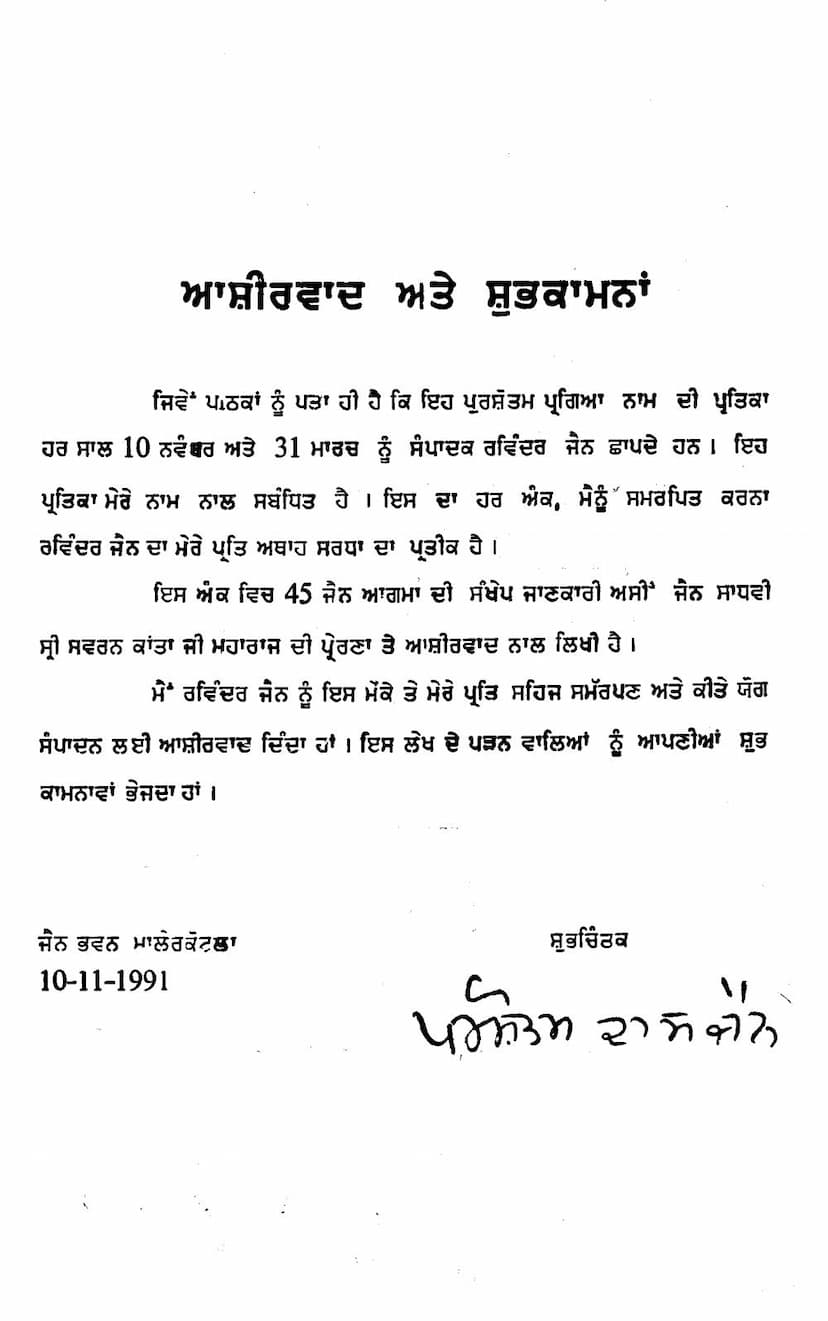Jain Sahitya
Added to library: September 2, 2025

Summary
The Jain Sahitya (Jain Literature) book, authored by Purushottam Jain and Ravindra Jain, published by themselves, is a comprehensive overview of Jain scriptures. It begins with a dedication from Purushottam Jain to Ravindra Jain, highlighting their collaboration.
The book then delves into the history and structure of Jain literature, tracing its origins to the 14 Purvas, of which only 12 Angas remain today. It explains that Jain Agamas were originally composed in the local dialect of Ardha Magadhi and discusses the tradition of preserving these texts through recitations (Vachana). The text details the efforts to compile and preserve Jain literature during times of famine and political upheaval, mentioning various councils and scholars involved.
The book categorizes Jain Agamas into four sections based on their subject matter:
- Charan Karan Anuyog: Texts explaining conduct and discipline.
- Dharma Katha Anuyog: Texts containing religious stories and biographies.
- Ganit Anuyog: Texts dealing with mathematics.
- Dravya Anuyog: Texts explaining philosophical principles.
It then provides a detailed description of the available Jain Agamas, including:
-
The 12 Angas:
- Acharanga: Described in detail with its two root sections (Shrut Skandhas) and their respective studies (Adhyayanas), covering topics like asceticism, non-violence, conduct, and ethical principles.
- Sutra Kritanga: Focuses on philosophical debates and the refutation of other philosophical schools, detailing its 23 studies.
- Sthananga and Samvayanga: Presented as encyclopedic works containing vast information on various subjects, including cosmology, sociology, and the classification of beings.
- Bhagavati (Vyakhya Prajnapti): Referred to as the Jain encyclopedia, covering a wide range of topics from philosophy and history to geography and dreams.
- Gyata Dharm Kathanga: Contains religious stories and narratives, with descriptions of the lives and teachings of prominent Jain figures.
- Upasaka Dasanga: Focuses on the duties and practices of lay followers (upasakas).
- Antakrit Dasanga: Narrates the lives of individuals who achieved liberation.
- Anuttaro Upapatika Dasanga: Discusses the beings residing in the highest heavens.
- Prashna Vyakarana: Addresses the causes of karma and liberation, though its original form is not fully available.
- Vipaka Sutra: Explains the consequences of good and bad deeds through stories.
- Drishtivada: Considered a lost Anga, it is described as having five parts, including the 14 Purvas.
-
The 12 Upangas: A list of Upanga texts is provided, such as Rajapraishniya, Jivabhigama, Prakhyapana, Suryapragyapati, Chandragragyapati, Jambudvipa Praggyapati, Niryavalika, Kalpa Avantika, Pushpachulika, Varshni Dasha, etc. These texts cover a wide array of subjects including cosmology, astrology, history, and the lives of Jain saints.
-
The 6 Cheda Sutras: These texts focus on the conduct and discipline of Jain monks and nuns, detailing rules related to asceticism, penance, and expiation for transgressions. The specific Cheda Sutras mentioned are Utasarga, Apavada, Dosh, Prayschitta, Dashavaikalika, Avashyaka Churni, Pind Niyukti, Ogha Niyukti, and Naisadha.
-
The 4 Mula Sutras: These are considered essential for new monks and are described as containing the core teachings of Jainism. The key Mula Sutra discussed is Uttaradhyayana Sutra, referred to as the essence of Jainism and containing the last sermon of Lord Mahavir. It is compared to the Bhagavad Gita and Dhammapada. Other Mula Sutras mentioned include Dashavaikalika Sutra, Avashyaka Churni, and Pind Niyukti.
-
Prakirnak: These are considered miscellaneous texts, and there is a difference of opinion among Jain sects regarding their authenticity as the direct teachings of Lord Mahavir. The book lists ten such texts, including Chaturashran, Atma Pratikhya, Mahapratikhyan, and Bhakta Parigya.
The book concludes by emphasizing the importance of these scriptures in understanding Jain philosophy, ethics, and history. It highlights the vastness and depth of Jain literature, with its intricate classifications and detailed explanations of various concepts.